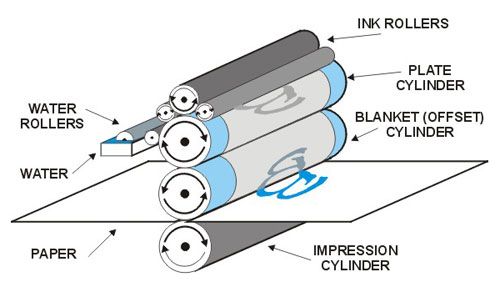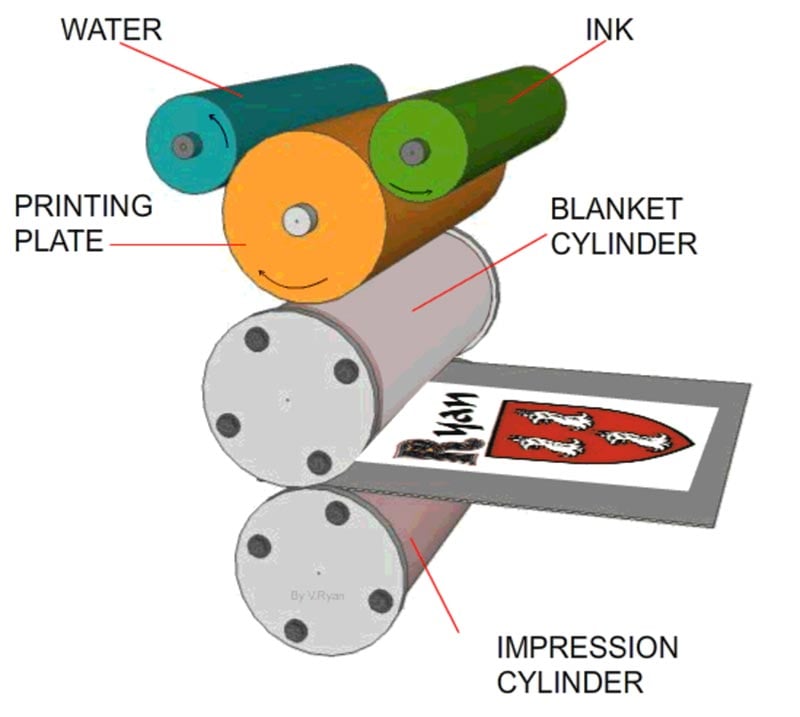A Comprehensive Guide to Comprehending Litho Printing Strategies
The world of litho printing, a method stemming from the late 18th century, is an interesting blend of background, scientific research, art and advancement. Keep with us as we journey right into the exciting realm of litho printing.
The Historic Advancement of Litho Printing
The historical trajectory of litho printing, a pivotal development in the realm of interaction, is a fascinating tale of human ingenuity. The procedure evolved with the advent of the rotary press, which considerably increased efficiency. Each stage of litho printing's advancement showcases humanity's relentless search of effectiveness and high quality in visual communication.
Decoding the Science Behind Litho Printing Inks
Progressing in the exploration of litho printing methods, the emphasis now moves to the scientific research behind litho printing inks. The composition of these inks, their drying process, and shade mixing strategies form the backbone of this complicated art type. Understanding these elements is vital to understanding the craft and achieving the preferred print outcomes.
Make-up of Litho Inks
In lithographic printing, the essential role of litho inks can not be overemphasized. Pigments, the color-providing components, are carefully ground bits suspended in the car, a liquid that carries the pigment onto the printing surface. Each element plays a vital component in the last print's high quality, making the precise solution of litho inks an elaborate science.
Ink Drying Process
From the composition of litho inks, attention transforms to the fascinating procedure of ink drying out. The drying procedure is important, as it influences the last print's high quality and long life. 2 key approaches are utilized in litho printing: oxidative drying and absorption. Oxidative drying out involves the ink reacting with oxygen in the air to form a difficult, dry movie. This approach gives a long lasting coating, yet can be slower contrasted to absorption. Absorption, on the other hand, entails the ink permeating into the paper fibers, which is a much faster procedure yet can lead to much less vibrant shades. The choice between these techniques depends on variables such as print speed demands, the paper kind utilized, and the preferred finish.
Shade Mixing Strategies
While the drying process plays a key role in litho printing, the scientific research of shade mixing strategies holds equivalent significance. This is a complex procedure that entails the mindful mixing of primaries: cyan, magenta, and yellow, in varying percentages to accomplish a broad selection of colors. The enhancement of black ink, known as 'vital', helps in controling the strength and depth of the shades. The science behind litho printing inks also takes into account the openness of the ink, which affects exactly how shades overlay and mix. To achieve an efficient color mix, print experts have to additionally recognize the intricacies of ink habits, color concept, and the physical residential properties of the substrate on which the ink is applied.
The Art and Design Components in Litho Printing
Litho printing takes a breath life right into art and design with its special components. The process involves producing an image on a lithographic sedimentary rock plate or metal plate with a smooth surface area. The photo is then printed onto a tool, typically paper, by transferring the ink from the plate. What collections litho printing apart is its capacity to replicate elaborate styles with high integrity, making the outcome practically identical to the initial art work. This is attained via the use of various line techniques such as cross-hatching, stippling, and hatching, which allow for a series of tonal results. Additionally, litho printing fits a selection of colors, enabling musicians to produce lively and vibrant prints. This mix of accuracy and flexibility makes litho printing a recommended selection for many artists and designers.
Modern Applications of Litho Printing Techniques
Litho printing methods have actually located extensive use in the modern-day business market. Its influence and relevance remain to expand with the arrival of brand-new advancements and modern technologies in the area. This area will certainly explore Learn More Here these modern applications and the transformative role they play in the printing industry.
Commercial Litho Printing Uses
In today's digital age, one could question the significance of typical printing techniques. Litho printing continues to be a vital component of the industrial sector. High-volume printing jobs, such as the manufacturing of books, papers, and packaging, count on litho printing for its ability to provide premium photo quality and expense effectiveness. The process, which includes moving an inked image from a plate onto a rubber blanket and then to the printing surface, provides unrivaled uniformity. This makes it excellent for work calling for a huge print run. Litho printing additionally offers a wide color spectrum, above that of digital printing. This makes it the best choice for projects that demand vivid, top notch color recreation.
Innovations in Litho Printing
Pressing the limits of conventional strategies, modern innovations have actually sustained a host of innovations in litho printing. These advancements have not only enhanced the top quality and efficiency of litho prints yet also broadened its application extent. One popular advancement is electronic litho printing, which integrates the merits of electronic innovation with litho's high-grade output. This crossbreed model supplies faster setup times, minimized waste, and makes it possible for on-demand printing. Another notable improvement is the introduction of eco friendly inks. These inks, made from vegetable or soy-based services, have significantly decreased the market's environmental influence. litho printing. Furthermore, the development of sophisticated plate technology has streamlined the printing process, leading to sharper photos and enhanced shade integrity. These innovations emphasize the enduring importance of litho printing in the modern world.
Exploring the Process of Litho Printing: Detailed

Difficulties and Solutions in Contemporary Litho Printing

In spite of the precision and practice that litho printing happily maintains, it is not without its set of modern challenges. The most prevalent concerns include the high initial arrangement cost, problem in printing variable information, and ecological concerns due to chemical usage. Remedies are emerging as innovation progresses. Digital litho printing allows for cost-efficient brief go to my site runs and easy modification, resolving the concern of variable data. Environmentally-friendly inks and safer plate-making procedures minimize ecological worries. Furthermore, advancements in automation have actually lowered labor prices, even more democratizing the lithography procedure. Hence, while there are difficulties, the litho printing industry is proactively adapting to fulfill them head-on, guaranteeing its importance in the future.
Conclusion
In conclusion, litho printing, with its rich history and clinical complexities, holds a significant location in the print sector. The future click over here now of litho printing hinges on its ability to adjust to these changing needs, verifying its enduring value in an advancing market.
